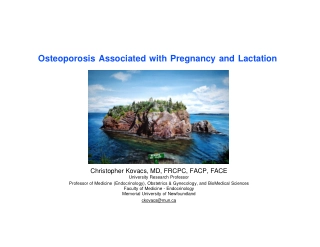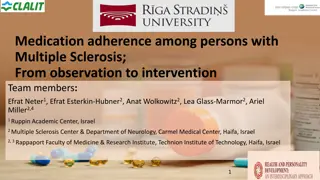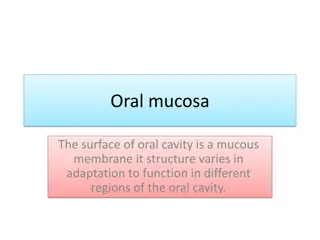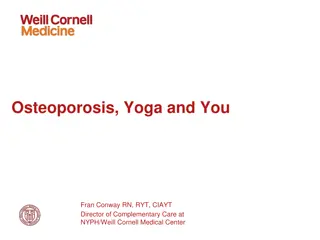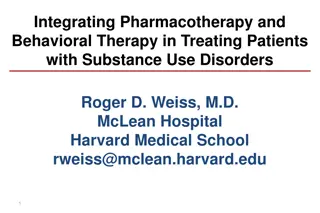Recommendations for Screening Adherence to Oral Bisphosphonates in Osteoporosis
The International Osteoporosis Foundation and European Calcified Tissue Society Working Group provides recommendations for screening adherence to oral bisphosphonates in osteoporosis. Low adherence to bisphosphonates can lead to reduced efficacy and cost-effectiveness in treating osteoporosis. The working group suggests using bone turnover markers like PINP and CTX to identify low adherence in postmenopausal women initiating oral bisphosphonates. The TRIO Study evaluates the effects of Aln, Ris, and Ibn on bone turnover markers in postmenopausal women with osteoporosis.
Download Presentation

Please find below an Image/Link to download the presentation.
The content on the website is provided AS IS for your information and personal use only. It may not be sold, licensed, or shared on other websites without obtaining consent from the author.If you encounter any issues during the download, it is possible that the publisher has removed the file from their server.
You are allowed to download the files provided on this website for personal or commercial use, subject to the condition that they are used lawfully. All files are the property of their respective owners.
The content on the website is provided AS IS for your information and personal use only. It may not be sold, licensed, or shared on other websites without obtaining consent from the author.
E N D
Presentation Transcript
International Osteoporosis Foundation and European Calcified Tissue Society Working Group Recommendations for the screening of adherence to oral bisphosphonates www.iofbonehealth.org
IOF-ECTS Working Group Richard Eastell & Adolfo Diez-Perez (co-chairs) KE Naylor, B Abrahamsen, D Agnusdei, ML Brandi, C Cooper, E Dennison, EF Eriksen, DT Gold, N Gua abens, P Hadji, M Hiligsmann, R Horne, R Josse, JA Kanis, B Obermayer-Pietsch, D Prieto-Alhambra, JY Reginster, R Rizzoli, S Silverman, MC Zillikens
BACKGROUND I Bisphosphonates (BPs) are considered a first-line treatment of osteoporosis Adherence to BPs has been reported at 50% or below after one year1-3 Low adherence results in lack of efficacy (no or limited decrease in fracture risk) and reduced cost effectiveness4 1. Cramer JA, et al (2007). Osteoporos Int 18(8):1023 1031; 2. Kothawala P, et al (2007). Mayo Clin Proc 82(12):1493 1501; 3. Kanis JA, et al (2012). Osteoporos Int 23(1):213 221; 4. Hiligsmann M et al (2010). Calcif Tissue Int 86(3):202 210
BACKGROUND II Bone turnover markers (BTM) reflect the tissue effect of BPs1 Measurement of BTM has been proposed for monitoring treatment2 Serum CTX and PINP have been recommended as reference markers of bone turnover1 1. Vasikaran S et al (2011). Osteoporos Int 22(2): 391 420; 2. Kanis JA et al (2013) Osteoporos Int 24(1):23 57
WORKING GROUP ON ADHERENCE OF THE IOF AND THE ECTS Question to be addressed: Can the bone turnover markers PINP and CTX be used to identify low adherence in patients with postmenopausal osteoporosis initiating oral bisphosphonates for osteoporosis?
METHODS: THE TRIO STUDY (I) The TRIO Study1 was specifically addressing the question raised by the Working Group RCT of 172 postmenopausal women with osteoporosis Effect of Aln, Ris and Ibn on BTM Proportion of cases with decreases in BTM beyond the LSC (2- tailed) at three months 1. Naylor KE et al (2016) . Osteoporos Int 27(1):21 31
METHODS: THE TRIO STUDY (II) Blood sampling at baseline and several times after starting BPs Adherence evaluated by the Medication Event Monitoring System (MEMS) caps Represent a benchmark for measuring the effect of treatment on BTM 1. Naylor KE et al (2016) . Osteoporos Int 27(1):21 31
EFFECT OF BPS ON SERUM CTX LSC threshold
EFFECT OF BPS ON SERUM CTX LSC threshold
PERFORMANCE OF BTMS FOR SCREENING Detection rate: proportion of patients with changes in BTMs that exceed the least significant change when taking oral BPs. A (positive) Detection rate = A (positive) + C (negative) Positive = Cases with a decrease > LSC in one or both BTM Negatives = Cases with decrease < LSC or no decrease LSC = Least significant change
DETECTION RATE BTM Decrease >LSC (N) Decrease < LSC (N) Detection Rate(%) N (IDS iSYS) CTX 146 127 19 86.9 PINP 149 125 24 83.9 CTX + PINP 146 138 8 94.5
CRITICAL VALUES FOR PINP AND CTX PINP CTX Roche Cobas e411 Roche Cobas e411 IDS iSYS IDS iSYS Controls, mean 31 g / L 33 g / L 327 ng / L 221 ng / L LSC 29% 23% 54% 50% LSC 6.2 g / L 5.7 g / L 80 ng / L 60 ng / L Effect -51 % -54 % -75 % -74 % Effect -28 g / L -32 g / L -490 ng / L - 360 ng / L Reproduced from Eastell R et al., Diagnosis of endocrine disease: Bone turnover markers: are they clinically useful? Eur J Endocrinol. 2018 178:R19-R31 with permissions from BioScientifica Ltd.
ALGORITHM FOR ADHERENCE SCREENING BTM Continue Treatment Decrease > LSC Baseline BTM (PINP, CTX) 3-months BTM (PINP, CTX) BTM Reassess Treatment Decrease < LSC Treatment initiation
IF BTM DO NOT DECREASE Poor adherence !!! Treatment stopped Wrong administration Reassess treatment Other causes Undetected secondary osteoporosis Interfering medications Lack of efficacy
CONCLUSION Bone turnover markers are efficient for the screening of adherence to oral bisphosphonates Two measurements, at the treatment initiation and at month three, are recommended
ACKNOWLEDGMENT The educational slide kit was made possible through an unrestricted grant from
Our vision is a world without fragility fractures, in which healthy mobility is a reality for all. Join us


